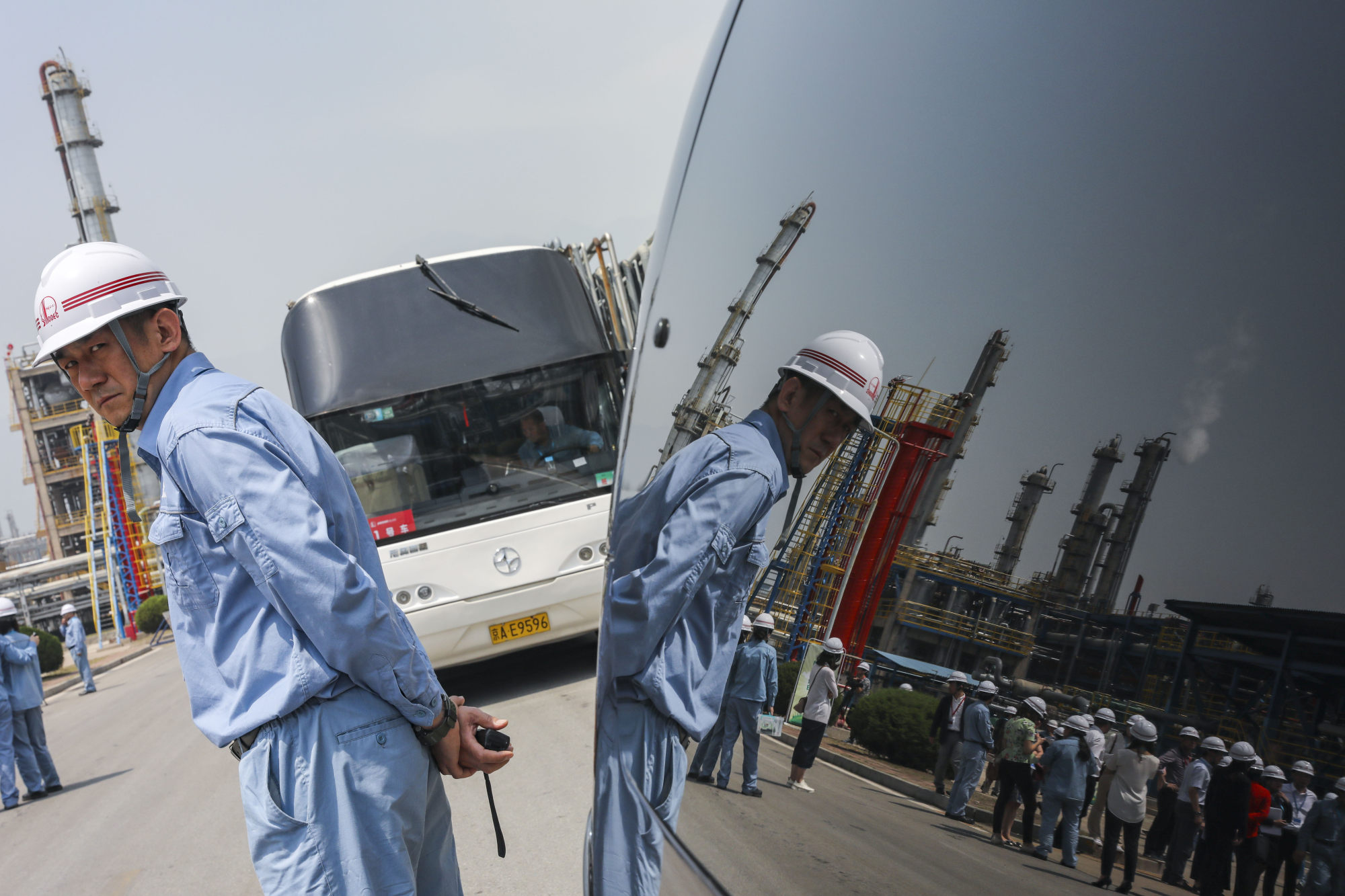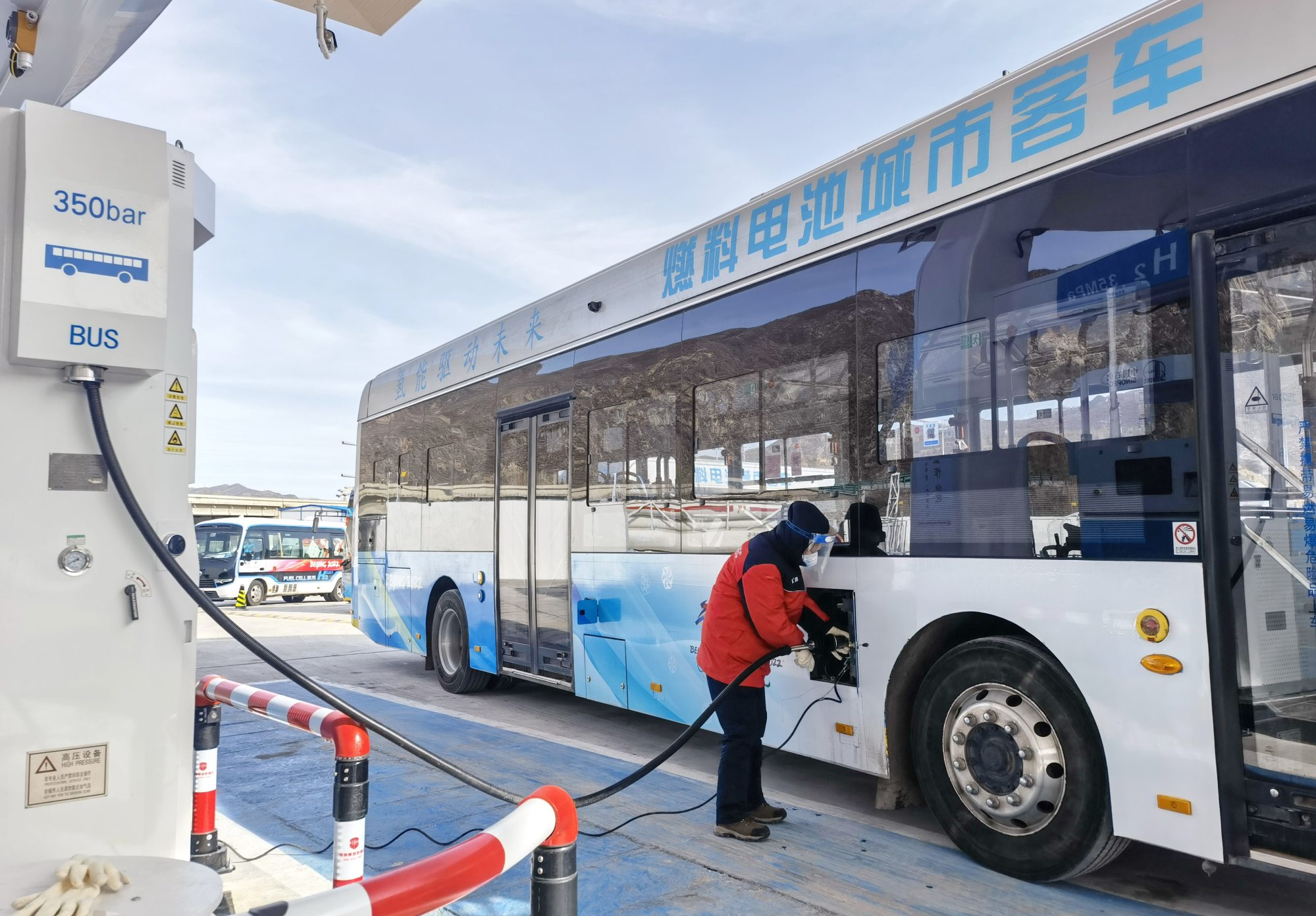
Climate change: Sinopec’s parent to build China’s first long-distance hydrogen pipeline to boost green fuel usage
- The ‘west-to-east’ demonstration pipeline will stretch over 400km from Inner Mongolia to Beijing, according to China Petrochemical Corp
- The project will greatly lower the transport cost of hydrogen, the key barrier to faster green hydrogen development in China, the company said
China Petrochemical Corp, the nation’s largest oil refiner and fuel supplier, unveiled a plan to build the country’s first long-distance hydrogen pipeline to accelerate green energy development.
“When completed, it will replace the Beijing-Tianjin-Hebei region’s fossil fuel-based hydrogen production, and help meet [growing] hydrogen demand in the transport sector,” China Petrochemical said in a statement on Monday. “It will also greatly relieve the nation’s green hydrogen demand-supply mismatch.”

Stretching over 400km from Ulanqab in the Inner Mongolia autonomous region to Sinopec’s Yanshan petrochemical processing plant in Beijing, the new conduit will be the nation’s first cross-regional, large-scale transmission pipeline for pure hydrogen.
Under the current plan, the pipeline’s transmission capacity can be expanded to 500,000 tonnes in the long term, up from the initial 100,000 tonnes. Various connection points have been designed for potential sources of hydrogen to be fed into the system.
The pipeline and its potential sub-branches will form a key part of the decarbonisation effort in the highly urbanised region that it will supply – which has a population of 110 million and annual economic output of 10 trillion yuan (US$1.45 trillion).
Beijing wants renewable energy to contribute 14 per cent of the capital city’s energy consumption by 2025, and for green electricity imports to double from 2020, to help China complete its dual goals: Reach peak carbon emissions by 2030 and become carbon neutral by 2060.

The new pipeline’s routing, technical study and construction design work have been progressing well, with the feasibility study report “basically completed,” China Petrochemical said. It did not provide estimates on the construction time frame, investment and returns.
The project will greatly lower the transport cost of hydrogen, the key barrier to faster green hydrogen development in China, the company said.
“Finding a way to deliver green hydrogen [efficiently] from Inner Mongolia and the rest of western China to key consumption centres in the eastern regions has always been a bottleneck,” it said. “Currently, trucking is still the mainstay long-distance hydrogen transport method, which is costly and inefficient.”
Green hydrogen, produced by breaking water into hydrogen and oxygen using renewable energy, is the cleanest way to produce hydrogen power, but it is still a nascent industry in China and abroad.
China Petrochemical said it has planned a large-scale green hydrogen project in Ulanqab, which will be powered by solar and wind farms.

However, it has not announced a target for green hydrogen output.
Under China’s first hydrogen strategy unveiled a year ago, China will have at least 50,000 hydrogen fuel-cell electric vehicles on the road, and produce 100,000 to 200,000 tonnes of green hydrogen a year by 2025.
Hydrogen production in China reached around 33 million tonnes in 2020, or 30 per cent of the world’s total, but about two-thirds of it was produced by coal, generating around 360 million tonnes of carbon dioxide emissions, according to the International Energy Agency.

